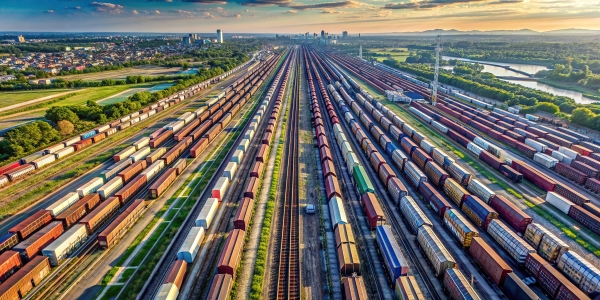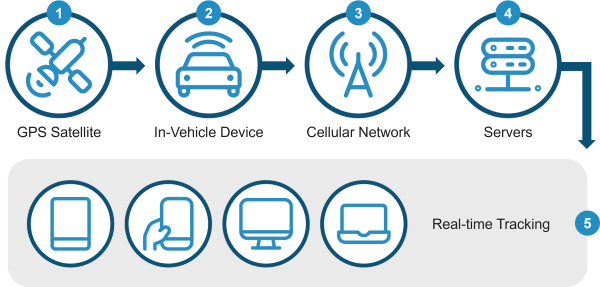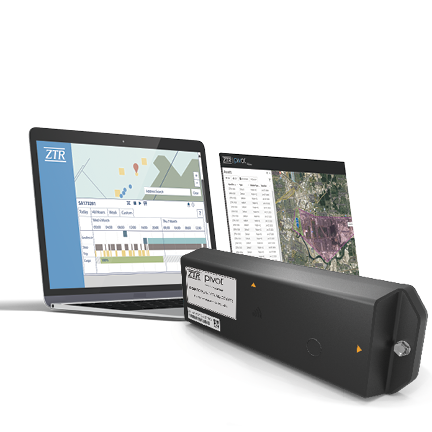In the world of rail shipping, efficiency is the name of the game. But, for those at the helm, navigating the challenges without the right tools can be daunting. Enter railcar monitoring—a revolutionary solution changing how rail shippers operate. This blog will uncover why railcar monitoring is essential for rail shippers, logistics managers, and supply chain professionals, and how it can enhance visibility, operational efficiency, safety, and compliance.
Challenges Faced by Rail Shippers
Delays and Inefficiencies
For rail shippers, delays can be a nightmare. Without real-time data, operators struggle to keep things running smoothly, leading to inefficiencies and higher costs. Imagine waiting for a shipment that’s nowhere to be found. Frustrating, right? This lack of visibility can cause significant disruptions in supply chains, affecting not just the rail shippers but also the end consumers. Effective monitoring can streamline these operations by providing accurate, timely information, ensuring shipments are tracked and delivered on schedule. By implementing advanced tracking systems, rail shippers can minimize delays, reduce costs, and improve overall customer satisfaction.
Lost Shipments
Losing a shipment can disrupt entire supply chains, affecting everything from production schedules to customer deliveries. Inadequate tracking means shipments could be misplaced, causing major operational hiccups and financial losses. This lack of visibility can lead to delays, increased costs, and dissatisfied customers. But with reliable railcar monitoring, these lost shipments can become a thing of the past, ensuring that goods are tracked accurately, improving efficiency, and maintaining trust in the supply chain.
Safety Concerns
Safety is paramount in rail shipping. Unmonitored railcars can pose risks from potential impacts or unauthorized access, which could lead to theft, damage, or even derailments. Railcar monitoring ensures that these safety concerns are addressed promptly by providing real-time data on the location, condition, and security of the railcars. This proactive approach not only protects cargo and personnel but also enhances operational efficiency, reduces liability, and ensures compliance with safety regulations.
Regulatory Compliance
Meeting complex industry regulations can be challenging without reliable monitoring systems. Railcar monitoring helps shippers document compliance and adhere to regulations seamlessly.
Benefits of Railcar Monitoring
Enhanced Visibility
Real-Time Tracking
Real-time tracking offers up-to-the-minute location data, allowing shippers to monitor their cargo throughout its entire journey. By providing detailed insights into the exact whereabouts of shipments at any given moment, this technology enhances logistical efficiency and provides peace of mind. This level of transparency ensures that nothing falls through the cracks, enabling quick responses to any potential issues and fostering greater trust between shippers and customers.
Supply Chain Transparency
Increased visibility into railcar movements significantly enhances coordination across the entire supply chain. When all parties, including manufacturers, shippers, and logistics providers, have access to the same real-time data, overall efficiency skyrockets. This improved transparency helps in better planning, reduces delays, and ensures that resources are allocated more effectively, ultimately leading to more streamlined operations and cost savings for everyone involved.

Operational Efficiency
Streamlined Logistics
Monitoring reduces dwell times and optimizes routing, ensuring timely delivery. It’s like having a backstage pass to your supply chain, providing real-time insights and proactive solutions to potential issues. With effective monitoring, you can track every movement of your goods, anticipate delays, and make informed decisions to keep everything running smoothly.
Asset Utilization
With improved tracking, shippers can prevent the overuse or underuse of railcars, thereby optimizing the utilization of their fleet. This not only reduces the need for additional equipment but also minimizes downtime and maintenance costs. By leveraging advanced tracking technologies, companies can ensure that every railcar is used to its fullest potential, maximizing efficiency and profitability. This means getting the most out of every asset, every time, and maintaining a streamlined operation.

Safety and Security
Impact Monitoring
Sensors detect impacts and potential damages in real-time, allowing for immediate response and the prevention of further issues. By identifying problems as they occur, these sensors enable quick interventions, reducing the risk of extensive damage. This proactive approach not only mitigates immediate concerns but also contributes to long-term savings in both time and money. Investing in such technology ensures a more efficient and cost-effective management of resources, ultimately enhancing overall operational stability.
Unauthorized Access Alerts
Monitoring systems provide real-time alerts for any unauthorized access, effectively safeguarding your cargo. These systems utilize advanced technology to detect and notify you of potential security breaches, ensuring that every shipment is monitored closely. Peace of mind comes with knowing your shipments are secure, allowing you to focus on other aspects of your business with confidence.
Predictive Maintenance
Proactive Maintenance
Data from monitoring systems enables the early detection of maintenance needs, minimizing downtime. Keeping railcars in top shape means fewer disruptions and a smoother operation.
Extended Railcar Life
Regular maintenance based on monitoring data extends the lifespan of railcars, reducing replacement costs. This is a win-win for shippers, leading to long-term savings.
Technological Solutions for Railcar Monitoring

GPS Tracking
Accurate location data helps track railcar movements, ensuring that shipments are on the right path and arrive at their destinations on time. GPS tracking is a key component of modern railcar monitoring, providing real-time updates and detailed information about the railcar's position. This technology enhances the efficiency of logistics operations, reduces delays, and improves overall supply chain management.
IoT Sensors
These sensors monitor various parameters such as door/hatch status, load status, and handbrake status, ensuring that every aspect of the railcar's condition is tracked in real time. The Internet of Things (IoT) is revolutionizing how railcars are monitored and managed, providing unprecedented levels of data and analytics to improve safety, efficiency, and maintenance schedules. This technology enables operators to make more informed decisions and promptly address any issues, thereby optimizing overall rail operations.
Telematics Systems
Comprehensive data collection and real-time reporting significantly enhance operational insights, allowing for more informed decision-making and streamlined processes. Telematics systems, equipped with advanced sensors and analytics, provide a wealth of detailed information on various parameters such as train speed, fuel consumption, and maintenance needs. This data is invaluable for optimizing rail operations, reducing costs, and improving overall efficiency and safety.
An Advanced Railcar Monitoring Solution

One prime example of advanced railcar monitoring is Pivot by ZTR. Developed in collaboration with BlackBerry, Pivot combines IoT gateways and telematics sensors to provide real-time data and insights on railcar operations, significantly improving safety and efficiency. The system allows for continuous monitoring of various parameters such as location, speed, and mechanical health, enabling proactive maintenance and reducing downtime. By leveraging cutting-edge technology, Pivot ensures railways operate smoothly and more reliably, ultimately enhancing the overall transportation network.
Future Trends in Railcar Monitoring
Artificial Intelligence
AI-driven analytics will provide deeper insights for optimizing operations by analyzing vast amounts of data with unprecedented accuracy. This advanced technology will enable rail companies to make more informed decisions, predict maintenance needs, and improve overall efficiency. The future of railcar monitoring lies in intelligent data analysis, where predictive algorithms can anticipate issues before they occur, ensuring smoother and safer operations.
Internet of Things (IoT)
Increased connectivity will enhance real-time monitoring capabilities, allowing for more accurate and timely data collection. This advancement will improve decision-making processes and operational efficiency. The IoT is set to revolutionize railcar monitoring with even more precise data, providing detailed insights into the condition and performance of each railcar. As a result, maintenance can be better predicted, downtime reduced, and overall safety enhanced.
Edge Computing
Faster data processing at the edge will enable more responsive and situationally aware systems, allowing for real-time decision making and enhanced operational efficiency. This advanced technology will make railcar monitoring even more effective by providing detailed insights and timely alerts, ultimately improving safety and performance across the entire rail network.
Next Steps
If you're ready to take your railcar monitoring to the next level or want to know how it can benefit your operations, explore Pivot by ZTR. See how this cutting-edge solution can transform your rail operations and provide the insights you need to stay ahead of the competition. Fill up this form to get started today.